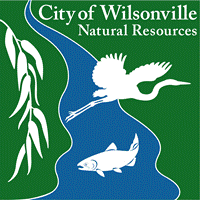Emerald Ash Borer

Arborists are taking aim at a new foe that is substantially altering the world’s treescape.
Emerald ash borer, or EAB, is a metallic wood-boring beetle that destroys ash trees, and also threatens olive trees and white fringetree. First discovered in the United States in Michigan in 2002, this invasive insect is considered the most destructive forest pest ever encountered.
EAB has killed hundreds of millions of ash trees across the east coast and Midwest over the last 20 years. The pest was first discovered in Oregon, in Forest Grove, in 2022.
Quaratine Alert
In August 2024, the Oregon Department of Agriculture issued a permanent quarantine across Washington, Yamhill, Marion and Clackamas Counties. Quarantine prohibits materials from all plant parts of ash (Fraxinus spp.), white fringetree (Chionanthus virginicus), and olive (Olea spp.) trees from movement outside Washington, Yamhill, Marion, and Clackamas Counties.
Resources
- Oregon Invasive Species Council: Report an possible EAB infestation
- Oregon Department of Forestry: EAB Fact Sheet
- OSU Extension Service: How to identify your Oregon ash
- OSU Extension Service: EAB Resource Page
- US Dept. of Agriculture: EAB Story Map
- EAB Monitoring Dashboard: Metro Area Map
- EAB Treatment: ODA List of Pesticides
- Identifying EAB: ODA Images of EAB and look-alikes
Tree Removal / Wood Disposal
Specific protocols must be followed to dispose of the wood in accordance with quarantine restrictions. Avoid removing infested trees unless necessary during the EAB active period (Apr. 1-Sept. 30) to prevent the spread of live insects. Removal should be done during EAB’s dormant period (Oct. 1–Mar. 31). Confirm that your tree service provider knows about the quarantine and can properly handle the wood materials.
ODA recommends the following practices for disposal:
Chipping: Wood, brush, and stump grindings must be chipped or ground down to a size of no more than 1” in two dimensions (two of the three measurements- length, width, depth- must be 1” or smaller). Typical chippers used in tree care operations will not reliably create chips that meet this specification. Chippers equipped with a 1” screen will assure compliance.
Debarking: At minimum, a complete removal of bark is required. The removed bark (and any removed wood) must be chipped down to a maximum size of 1” by 1” in 2 dimensions.
Heat: Wood must be heated according to established pest or disease specific Best Management Practices. For regulated pests and diseases, the wood temperature must reach 160 degrees F for 75 minutes in the center of the piece.
Tips
- Don’t plant ash trees; take good care of the ash trees you have with supplemental watering and mulching during periods of drought.
- Ash tree pruning and removal should take place from Oct. 1 to March 31.
- Once EAB is detected nearby, consider treating high-value ash trees with systemic insecticides on a two-to-three-year cycle, depending on the product. Treatment should occur before infestation for optimum protection, but studies have shown that treatment can be successful in infested trees with less than 20% canopy decline.
- To avoid spreading insects and diseases, don't transport firewood.
- Dead and dying ash trees should be removed before they become hazardous.
- In EAB quarantine areas (Washington County only as of March 2023) dispose of ash wood in accordance with state mandated protocols.
- Share information about EAB with others





